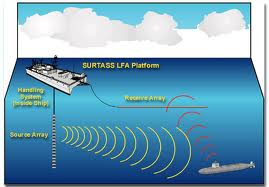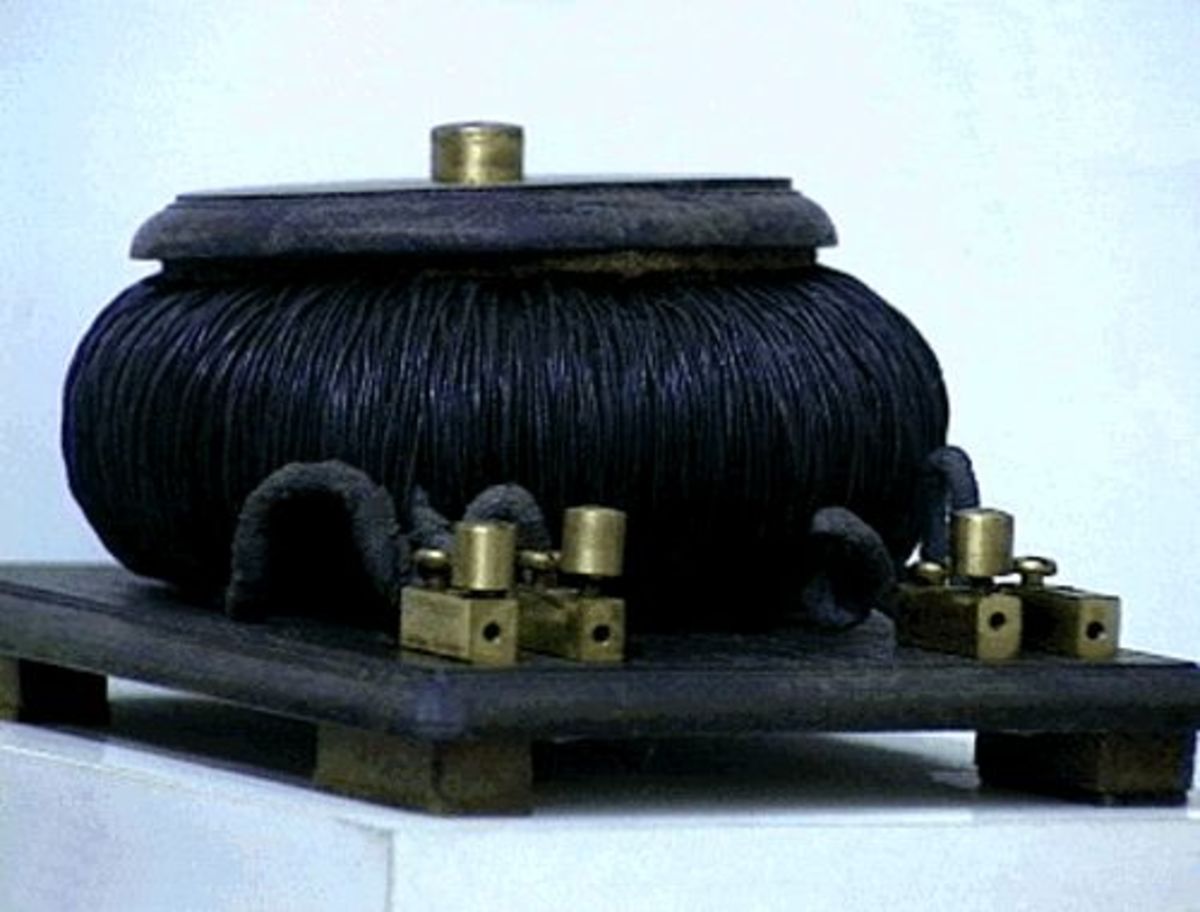Basic Sonar

Sonar
Seaman Jones “Conn, Sonar, Crazy Ivan”... Whenever the topic of sonar is brought up, most people normally reference some line from the movie “Hunt for Red October” or one of the various other popular submarine movies.
The term SONAR is actually an acronym for “SOund NAvigation and Ranging”. Although, many sea animals use echo location (sonar), the first recorded use of sonar in water was by Leonardo Da Vinci in 1490. A tube immersed in the water was used to detect vessels. This type of sonar is known as passive sonar.
There are two basic types of sonar. The first type is passive sonar, which is composed of a hydrophone (audio receiver), a computer, used for translating the received signal into a format that can be seen on a visual display. This type of sonar is a receive system only. The second type is active sonar, which is composed of a transducer (audio transmitter and receiver), a computer, used for inputting a set frequency into the transducer for transmission and for calculating the time and bearing of signal return to be translated into a format that can be seen as a blimp on a visual display. This type of sonar is a transmit and receive system.
Active sonar works on the principle that sound travels through a medium (water) at a set speed based on certain factors. Since, sound will reflect off of an object, Active sonar uses the time it takes for a transmission to be reflected back into the system to determine distance and direction of the return.
How does this work? Let’s first look at how sound travels through water. There are three factors that affect how fast sound travels through water; temperature, pressure and salinity. The average speed of water in the first one hundred feet of water is about 4800ft per second. So, how do temperature, pressure and salinity affect sound speed? Sound is lazy and always wants move away from high speed areas. So, for every 1 degree of change in temperature, changes the sound speed by 6ft per second; for every 100ft in depth, speed changes by 4ft per second and for every part per million of salinity change, speed changes by 2ft per second. Using this information, sound can be used to determine if there is an object in the water, and the distance of that object, that would normally not be seen.
The US and other Navies around the world use sonar as a means of locating submerged submarines. Sonar can also be used to track marine life or survey the topography of the ocean floor. Sonar is also used to locate oil, gas or other resources underground as well.
If you are fond of crime drama type TV shows, you may have noticed ground penetrating sonar being used to locate corpses or other items suspected of being buried is a certain location.
Sonar has come a long way since the first tube was placed into water to hear what was happening under the surface. It has uses in Commerce, Military, Police and even the medical field. It is being advanced each year and its uses are spreading to other realms other than just Military purposes. Who knows perhaps one day we might understand sonar well enough to begin to comprehend the actual meanings behind the calls of Whales, Dolphins and other marine life.




![Baltic Sea Anomaly Details: Is it a UFO or Hoax [video] Baltic Sea Anomaly Details: Is it a UFO or Hoax [video]](https://images.saymedia-content.com/.image/t_share/MTc2MjY0ODM3MjA1MjcxNzI1/baltic-sea-ufo-unidentified-submerged-object.jpg)




